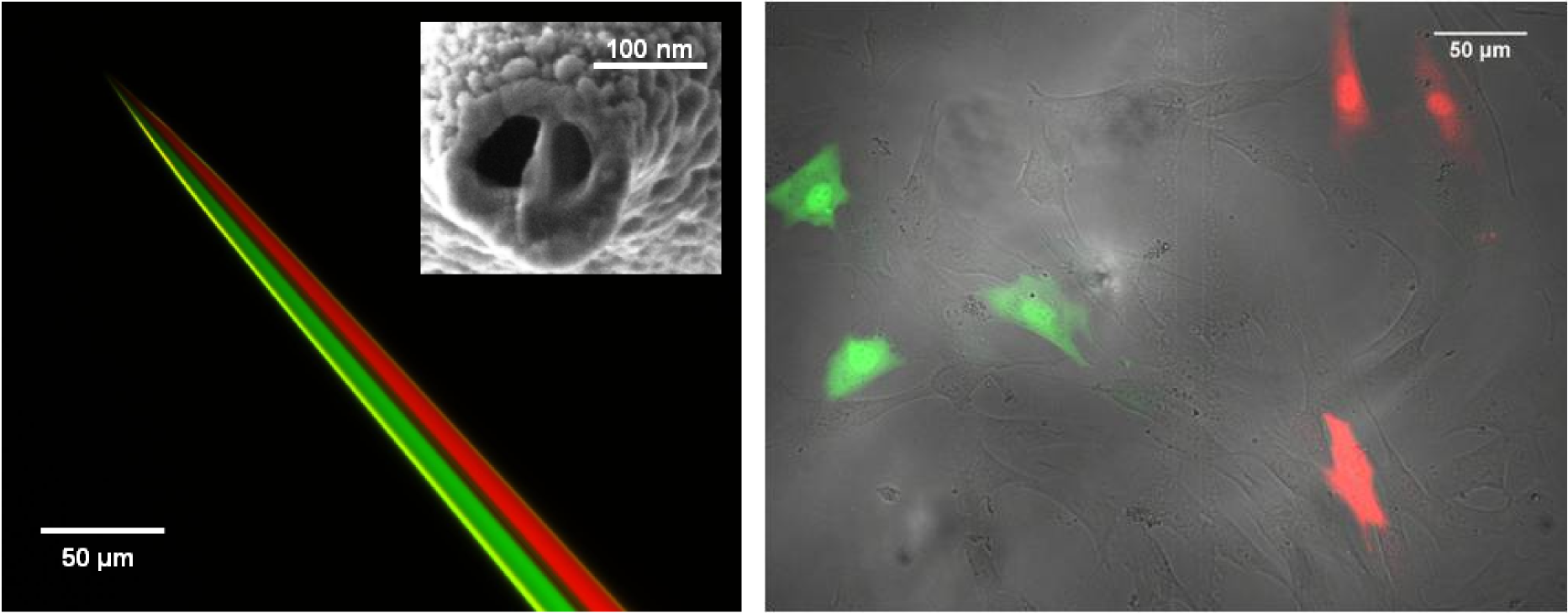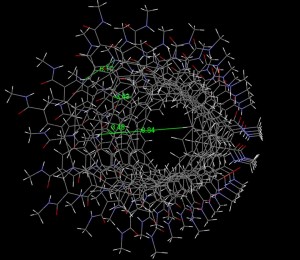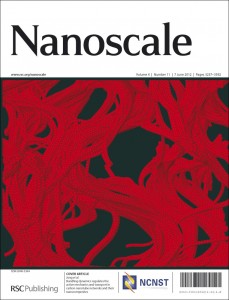This month sees the following articles in Nanoscale that are in the top ten most accessed for June:
A cuprous oxide–reduced graphene oxide (Cu2O–rGO) composite photocatalyst for hydrogen generation: employing rGO as an electron acceptor to enhance the photocatalytic activity and stability of Cu2O
Phong D. Tran, Sudip K. Batabyal, Stevin S. Pramana, James Barber, Lydia H. Wong and Say Chye Joachim Loo
Nanoscale, 2012, 4, 3875-3878
DOI: 10.1039/C2NR30881A
A new class of PANI–Ag core–shell nanorods with sensing dimensions
Vineet K. Shukla, Poonam Yadav, Raghvendra S. Yadav, Priya Mishra and Avinash C. Pandey
Nanoscale, 2012, 4, 3886-3893
DOI: 10.1039/C2NR30963G
Preparation and thermoelectric properties of sulfur doped Ag2Te nanoparticles via solvothermal methods
Wenwen Zhou, Weiyun Zhao, Ziyang Lu, Jixin Zhu, Shufen Fan, Jan Ma, Huey Hoon Hng and Qingyu Yan
Nanoscale, 2012, 4, 3926-3931
DOI: 10.1039/C2NR30469D
Unique magnetic properties and magnetization reversal process of CoFe2O4 nanotubes fabricated by electrospinning
Jiecai Fu, Junli Zhang, Yong Peng, Jianguo Zhao, Guoguo Tan, Nigel J. Mellors, Erqing Xie and Weihua Han
Nanoscale, 2012, 4, 3932-3936
DOI: 10.1039/C2NR30487B
One-step sonochemical synthesis of a graphene oxide–manganese oxide nanocomposite for catalytic glycolysis of poly(ethylene terephthalate)
Gle Park, Leian Bartolome, Kyoung G. Lee, Seok Jae Lee, Do Hyun Kim and Tae Jung Park
Nanoscale, 2012, 4, 3879-3885
DOI: 10.1039/C2NR30168G
Graphene: a versatile nanoplatform for biomedical applications
Yin Zhang, Tapas R. Nayak, Hao Hong and Weibo Cai
Nanoscale, 2012, 4, 3833-3842
DOI: 10.1039/C2NR31040F
Graphene oxide–Fe3O4 magnetic nanocomposites with peroxidase-like activity for colorimetric detection of glucose
Ya-lei Dong, Hui-ge Zhang, Zia Ur Rahman, Li Su, Xiao-jiao Chen, Jing Hu and Xing-guo Chen
Nanoscale, 2012, 4, 3969-3976
DOI: 10.1039/C2NR12109C
Different sized luminescent gold nanoparticles
Jie Zheng, Chen Zhou, Mengxiao Yu and Jinbin Liu
Nanoscale, 2012, 4, 4073-4083
DOI: 10.1039/C2NR31192E
Nanoparticle stability from the nano to the meso interval
Alvaro Mayoral, Hector Barron, Ruben Estrada-Salas, Alma Vazquez-Duran and Miguel José-Yacamán
Nanoscale, 2010, 2, 335-342
DOI: 10.1039/B9NR00287A
Supercapacitors based on high-quality graphene scrolls
Fanyan Zeng, Yafei Kuang, Gaoqin Liu, Rui Liu, Zhongyuan Huang, Chaopeng Fu and Haihui Zhou
Nanoscale, 2012, 4, 3997-4001
DOI: 10.1039/C2NR30779K
Why not take a look at the articles today and blog your thoughts and comments below.
Fancy submitting an article to Nanoscale? Then why not submit to us today!





















